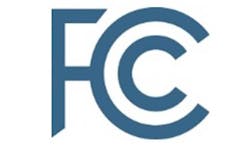The Federal Communications Commission's (FCC's) most recent iteration of its Open Internet net neutrality rules went into effect today when a Washington, DC, Circuit Court on June 11 declined a petition to stay them.
A panel of three circuit judges ruled that, in filing the request to delay the rules' implementation while the court determined whether the FCC had the legal right to reclassify broadband service under Title II, the US Telecom Association (along with several intervenors), "have not satisfied the stringent requirements for a stay pending court review."
The ruling cleared the way for the rules to go into force today as scheduled. However, it did not ensure that they would remain in place. The same panel also agreed to expedite its review of the reclassification. "The parties are directed to file a proposed briefing format and schedule within 14 days of the date of this order," the judges decreed.
The ruling was not a surprise, even to USTelecom. "While we're disappointed the court declined to grant our stay request, we recognize that the bar for obtaining a stay is exceptionally high. However, the court's decision to grant expedited briefing shows the gravity of the issues at stake, and will facilitate a quicker path to determining the proper legal treatment for regulating broadband Internet access service," said USTelecom President & CEO Walter B. McCormick Jr. in a prepared statement.
"As we pointed out in our request for stay, the FCC and Congress have long agreed that this critical service, which is fundamental to consumers' daily lives, should be lightly regulated to continue the enormous investment and innovation that has enabled the Internet-related economy to thrive. To shift course backward to yesterday's telephone regulation not only makes little sense, it isn't legally sound," McCormick continued. "That said, USTelecom continues to support the order's three bright-line rules prohibiting blocking, throttling, and paid prioritization, which were not part of the stay request. We look forward to providing the court a more fulsome, detailed accounting of the legal problems with the commission's order."
Naturally, FCC Chairman Thomas Wheeler was pleased with the ruling. "This is a huge victory for Internet consumers and innovators! Starting Friday, there will be a referee on the field to keep the Internet fast, fair, and open," Chairman Wheeler said in his own statement. "Blocking, throttling, pay-for-priority fast lanes, and other efforts to come between consumers and the Internet are now things of the past. The rules also give broadband providers the certainty and economic incentive to build fast and competitive broadband networks."
Having had an earlier attempt to enforce net neutrality fail in court, the FCC decided it would improve its chances by reclassifying Internet provision as a telecommunications service under the provisions of Title II of the Communications Act of 1934 as well as Section 706 of the Telecommunications Act of 1996 (see "FCC targets Title II regulation of Internet services with forbearances for Net Neutrality"). Such a move would grant it the authority to impose net neutrality in a way the DC Circuit Court had earlier ruled it had failed to demonstrate.
FCC commissioners voted in late February of this year to move forward with the plan (see "FCC passes Net Neutrality plan – whatever it may be"). While offering at least lukewarm support for net neutrality in principle, numerous individual carriers and the associations to which they belong vowed to fight the FCC reclassification strategy in court.
While both sides welcomed an accelerated review process, a final ruling is not expected for several months, if not years. In the most recent net neutrality go around, the FCC launched its net neutrality efforts in December 2010, and the DC Circuit Court did not deliver its final ruling until January 2014.
For more information on FTTx equipment and suppliers, visit the Lightwave Buyer's Guide.
Sponsored Recommendations
Sponsored Recommendations
Constructing Fiber Networks: The Value of Solutions
March 20, 2024
Data Center Network Advances
April 2, 2024
